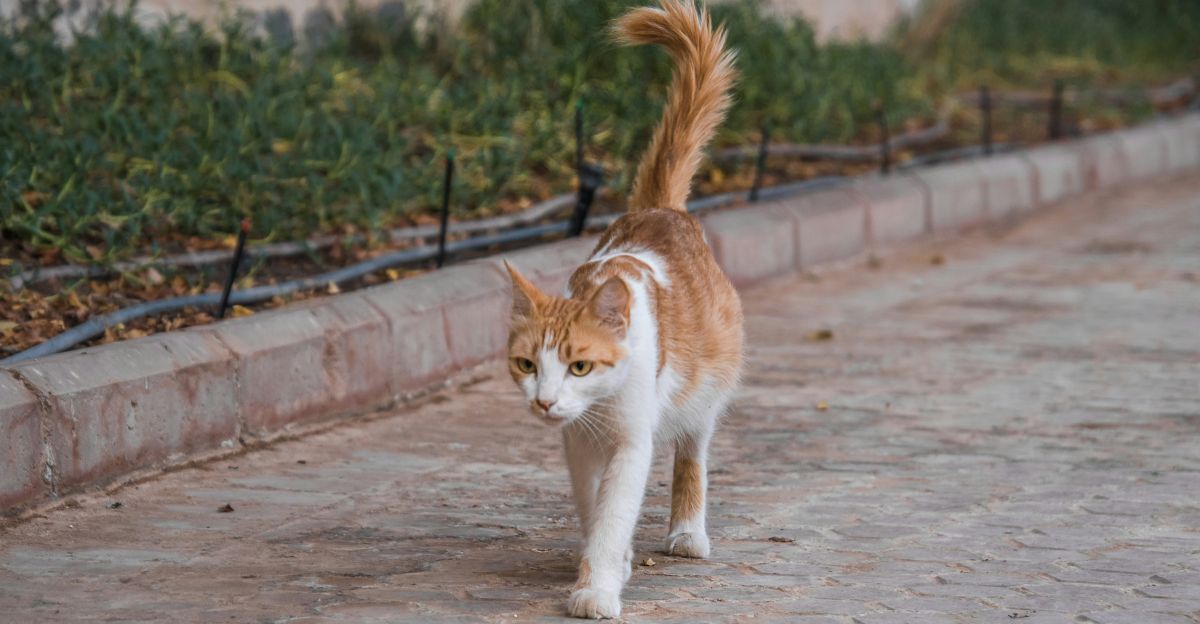The Tale of the Tail: Unlocking the Secrets of Your Cat's Most Expressive Feature

Ever watched your cat’s tail twitch with intense focus as they eye a bird outside the window? Or seen it shoot straight up like a flagpole the moment you walk through the door? That elegant, expressive appendage is so much more than a fluffy decoration. It’s a high-tech balancing tool, a complex communication device, and a direct line into your cat's thoughts and feelings.
So, why do cats have tails? The answer is a fascinating mix of biology, physics, and social behavior. Your cat's tail is a masterpiece of biological engineering, packed with bones, nerves, and muscles that give it an incredible range of motion. Ready to finally decode the secrets of the feline tail? Let's dive in!
The Ultimate Balancing Act
If you've ever asked why do cats have tails, their incredible sense of balance is one of the biggest answers. Think of your cat as a world-class gymnast who treats the back of your sofa like a balance beam. A huge part of their legendary agility comes directly from their tail.
When a cat walks along a narrow fence or makes a sharp turn during a high-speed chase, their tail acts as a dynamic counterbalance. If their body leans left, the tail swings right, instantly adjusting their center of gravity and keeping them stable. This function is so critical that scientific studies have confirmed it. In one experiment, cats that temporarily lost the ability to move their tails had a much harder time staying on a moving beam, proving just how essential active tail control is for their poise.
Speaking in Swishes and Flicks: A Guide to "Tail Talk"
Another major reason why do cats have tails is for communication. Your cat is talking to you all the time—and their tail is doing most of the chatting! Learning this silent language can transform your relationship and help you understand their needs better. While you should always consider context, here’s a quick guide to what some common tail positions mean :
● Tail Straight Up: This is a fantastic sign! A tail held high, often with a slight curve at the tip, is a confident and happy greeting. When your cat approaches you like this, they're saying, "Hello, I'm happy to see you and open to interaction!" Domestic cats are actually the only felines known to walk with their tails held straight up, a behavior kittens use to greet their mothers.
● The "Question Mark" Tail: When the tail is held high with a distinct hook or curve at the end, it’s an invitation to play. Your cat is feeling friendly, curious, and ready for some fun.
● Tail Tucked Low or Between the Legs: This is a signal of fear, anxiety, or submission. A cat tucking its tail is trying to make itself smaller and less threatening. It can also be a sign that they are in pain or feeling unwell.
● Puffed-Up "Halloween Cat" Tail: A tail that suddenly puffs up to twice its normal size means your cat is startled or feels seriously threatened. This is a defensive move to make themselves look bigger and more intimidating to a potential foe.
● Fast Whipping or Lashing: Watch out! A tail whipping rapidly from side to side is a clear indicator of agitation, annoyance, or aggression. This is your cat’s way of saying, "I'm overstimulated and need you to back off now."
● Slow, Gentle Swish: Don't confuse this with the angry lash. A slow, lazy swish usually means your cat is relaxed and content, or perhaps calmly focused on something interesting, like a squirrel outside.
● Wrapping Their Tail Around You: Consider this a feline hug! When your cat wraps their tail around your leg or arm, it’s a gesture of affection, friendship, and bonding.
An Ancient Toolkit: The Tail's Wild Roots
Your cozy house cat shares a deep history with lions, leopards, and cheetahs. For their wild ancestors, a tail was a vital piece of survival gear, essential for life as a predator. The tail's role in balance is crucial for stalking, chasing, and pouncing on prey with precision.
Different wild cats have tails adapted to their environment :
● Arboreal (tree-dwelling) cats like the Clouded Leopard have extra-long, muscular tails for balancing in the canopy.
● Cheetahs use their long tails as a rudder to make sharp, high-speed turns when chasing prey.
● Snow-loving cats like the Lynx and Bobcat often have shorter "bobtails." This helps prevent frostbite and keeps the tail from getting snagged in dense undergrowth during a stealthy hunt.
The Exception That Proves the Rule: What About Tailless Cats?
So if tails are so important, what about cats born without them, like the famous Manx? These unique felines are a fascinating case study in adaptation.
Manx cats compensate for the lack of a tail with powerful, elongated hind legs and an arched back. This unique anatomy gives them incredible jumping power and a distinctive "hopping" run. While they are excellent jumpers, some owners notice they may be less graceful at
recovering their balance once it's lost compared to a tailed cat.
Because they lack a key communication tool, Manx cats often rely more heavily on other signals like vocalizations and facial expressions to communicate with humans and other cats.
So, the next time someone asks you why do cats have tails, you’ll know it’s not just one simple answer. It’s a balancing rod, a mood ring, and an evolutionary masterpiece all in one. What is your cat's tail telling you right now?


